Toward to Logical and Integrative Understaing of Human
Department of Integrative and Systems Physiology
Members
Our team
Our laboratory seek to clarify mechanisms of life at molecular, organelle, cellular, organic and body levels with a new approach 'Systems Physiology' combining physiological experiments 'wet experiments' and mathematical analysis 'dry experiments'.
Satoshi Matsuoka M.D., Ph.D., Professor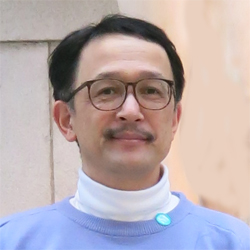
I am interested in how functions of cell, organ and body are organized
by orchestrating various elements (proteins) especially in heart. We challenge
this problem by performing a multi-level experiments combined with mathematical
analysis. Molecular biological study, electrophysiological study, fluorescence
imaging, motion analysis as well as mathematical modeling and analysis
are used. With this approach, we clarified how individual ion channels/transporters
play in cardiac excitation-contraction coupling, rhythm generation of heart
(automaticity) and cell volume regulation. The representative mathematical
model is a model of comprehensive cardiac myocyte, Kyoto model.
We investigate also functions of non-excitable cells, such as lymphocytes.
We study how ion channels/transporters, especially mitochondria Ca transporters,
regulate lymphocyte response to antigen.
We welcome all who are interested in systems physiology and want to challenge
the logic of life.
Ayako Takeuchi Ph.D., Associate Professor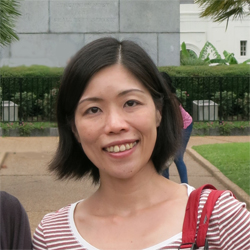
I am studying cellular ion dynamics of cardiomyocytes and lymphocytes by a combination of experiments and simulation analysis.
Hirofumi Shimizu Ph.D., Lecturer

I am interested in single-molecule dynamics of ion channel proteins. Conformational
changes of the proteins were recorded by diffracted x-ray tracking, which
can track the motions as a movie. I am trying to reveal the dynamics of
the ion channel proteins related to their function by combining the developments
of the method and the data analysis.
Yukario Takeda Ph.D., Assistant Professor
I have been interested in local Ca signalings in wide variety of cell types
(e.g. pacemaker cells within GI tract, vascular smooth muscle cells, and
pancreatic beta cells) and their relationships to distinct cellular functions,
especially when Ca dynamics are modulated by second messengers. In this
lab, I am focusing on cardiac pacemaker cells and lymphocytes. By combining
experiments with biosimulation analysis, I am challenging to reveal how
local Ca handlings between mitochondria and ER at submembrane spaces control
automaticity of the pacemaker cells and lymphocyte response to antigen,
particularly when different types of intracellular signaling cascades are
stimulated.
Nishat Akther, Research student 
Mitochondria plays an important role in the heart which is mediated by local calcium release (LCR). I want to study the isolated murine sinoatrial node cells of heart is there any metabolic impairments cause sinoatrial dysfunction with PLIN-2 overexpressing mice. And also want to study the atrial function of Perlilipin-2 overexpressing mice.
Akiko Mizuno, Secretary
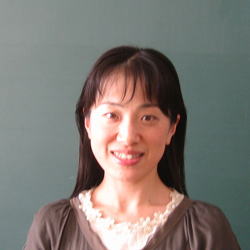
I am a secretary of this laboratry.
Yusuke Kawai
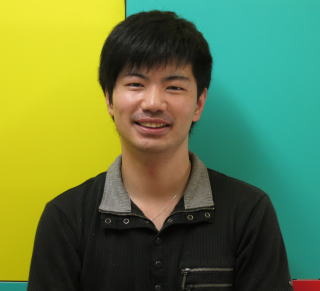 Title: Analysis of relationship between migration and calcium dynamics
in a tumor cell by using a cell migration chemotactic control technology
(supervised by Prof. Matsuoka and Prof. Fujita).
Title: Analysis of relationship between migration and calcium dynamics
in a tumor cell by using a cell migration chemotactic control technology
(supervised by Prof. Matsuoka and Prof. Fujita).
It has been reported that a gradient of intracellular calcium concentration
is produced during migration or chemotaxis of a kind of cells. However,
it is not clarified whether the same phenomenon occurs in tumor cells.
Therefore, I want to clarify the relationship between cell migration and
calcium dynamics in tumor cells by using a cell migration chemotactic control
technology. In addition to this, I do hope to discover unknown mechanisms
underlying tumor cell migration.
Members of Fukui Medical High School 1st class
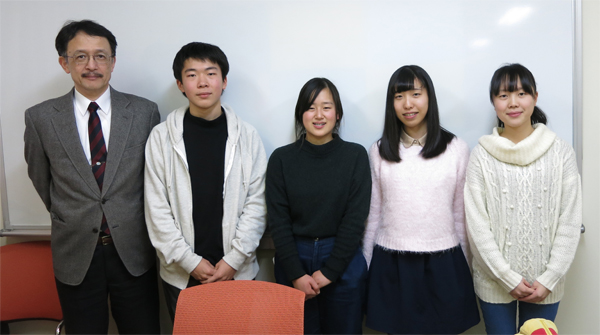
Members of Fukui Medical High School have studied the contribution of mitochondrial
Ca2+ transporter to action potential generation of mice ventricular myocytes.:
Yousuke, Saki, Erika and Rena
Members of Fukui Medical High School 2nd class

We study the Ca2+ dynamics of mouse ventricular myocyte: Misaki, Moe and Shino.
Members of Fukui Medical High School 3rd class
We investigated the effects of empagliflozin, an antidiabetic agent, on mouse
ventricular myocytes : Shunsuke, Hinako, Takuma, Saki.
Members of Fukui Medical High School 4th class
Using isolated cardiomyocytes, we are investigating
the role of extracellular ion concentration in Ca2 + transient: Marin, Masaki, Ryoya, Takeru.
OB and OG
Mohammed Moinul Islam M.S.(2017-2021)
Yumi Yoshida
Toru Ichimaru
Takuya Murata
Kazumi Narita
Akiko Takaku (2014-2017)
Naoko Takaku (2015-2016)